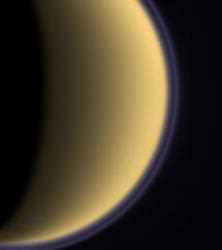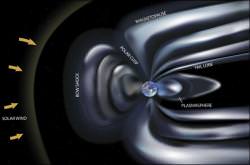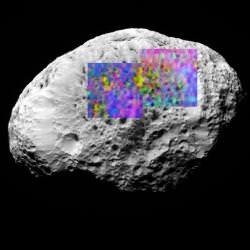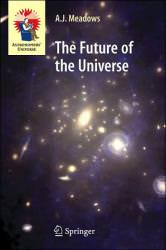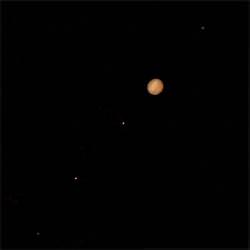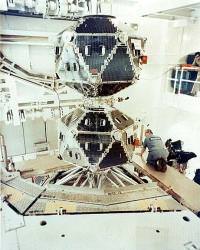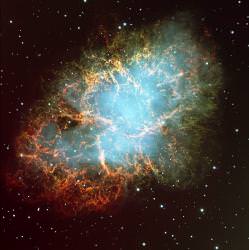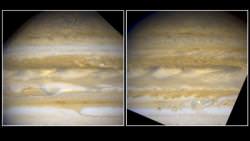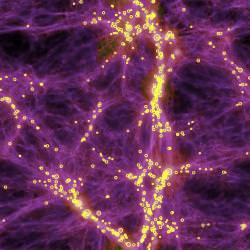Monday, July 2 – Orbiting in space 40 years ago, the Vela 3 and 4 satellites were quietly keeping watch on Earth’s nuclear test ban treaty. The Vela satellites were greatly successful and far exceeded their life expectancy. While checking data on this day just before the launch of the fifth Vela, scientists found an event recorded by Vela 4 – an event also strong enough to trigger a response from the Vela 3 satellite. While placement wasn’t accurate enough at the time to pinpoint the source, the scientists realized they had caught the first recorded gamma ray burst.
While very little is known about these mysterious events, we do know that they occur about once a day with a photon energy of 100 million electron volts. While some of them occur in our own Milky Way, science is unclear about the source of more distant explosions – and over 800 have been charted on a single map! One such source for gamma rays is a special type of star known as a Wolf-Rayet – a hot, huge star which is undergoing significant mass loss and exposing its central core.
Tonight for more southern viewers, take the time to look up one such incredible system, IC 4406. You’ll find it about 5 degrees northwest of Alpha Lupi, or just about a fingerwidth northwest of the Tau collection (RA 14 22 26.28 Dec -44 09 04.3). This roughly 10th magnitude planetary nebula is sometimes referred to as the “Retina Nebula” for its photographic resemblance to the human retina. This square appearing patch is a Wolf-Rayet nebula and color photographs show evidence of gamma rays as green sparkles!
Tuesday, July 3 – If you’re up before dawn, this morning would be a great opportunity to easily find Neptune around one degree north of the Moon.
Tonight for all observers, let’s take a closer look at the fascinating constellation of Lupus southwest of brilliant Antares. While more northerly latitudes will see only roughly half of this constellation, it sits well at this time of year for those in the south. So why bother?
Cutting through our Milky Way galaxy at a rough angle of about 18 degrees is a disc shaped zoned called Gould’s Belt. Lupus is part of this area, and its perimeter contains star-forming regions that came to life about 30 million years ago when a huge molecular cloud of dust and gas compressed – much like in the Orion area. In Lupus we find Gould’s Belt extending above the plane of the Milky Way!
Return again to the beautiful Theta and head around 5 degrees west for NGC 5986 (RA 15 46 03.44 Dec -37 47 10.1). It’s a 7th magnitude globular cluster which can be spotted with binoculars with good conditions. While this Class VII cluster is not particularly dense, many of its individual stars can be resolved in a small telescope.
Now sweep the area north of NGC 5986 (RA 17 57 06.00 Dec -37 05 -0.0) and tell me what you see. That’s right! Nothing. This is the dark nebula B 288 – a cloud of dark, obscuring dust which blocks incoming starlight. Look carefully at the stars you can see and you’ll notice they appear quite red. Thanks to B 288, much of their emitted light is absorbed by this region, providing us with a pretty incredible on-the-edge view of something you can’t see – a Barnard dark nebula.
Wednesday, July 4 – Did you know that celestial fireworks occurred in 1054 on this day? It is believed that the bright supernova recorded by Chinese astronomers occurred at this point in history, and today we know its remnants as M1 – the “Crab Nebula.”
But could such an event happen again in our own celestial “backyard?” Look no further than HR 8210 (RA 21 26 26.66 Dec +19 22 32.3). It may be nothing more than a white dwarf star hiding out in late night Capricornus, but it’s a star that has run out of most of its fuel. This rather ordinary binary system has a companion white dwarf star that’s 1.15 times the mass of our Sun. As the companion also expends its fuel, it will add mass to HR 8210 and push it over the Chandrasekhar limit – the point of no return in mass. This will result in a supernova event located only 150 light-years away from our solar system…50 light-years too close for comfort!
470 light-years away in the Gould Belt, and roughly 1.5 million years ago, a similar massive star exploded in the Upper Scorpius association. No longer able to resist its own gravitational mass by nuclear fusion, it unleashed a supernova event which left its evidence as a layer of iron here on Earth, and may have caused a certain amount of extinction when its gamma rays directly affected our ozone layer.
Take a long look at Antares tonight – for it is part of that association of stars, and is no doubt a massive red star also poised at the edge of extinction. At a safe distance of 500 light-years, you’ll find this pulsing red variable equally fascinating to the eye as well as to the telescope. Unlike HD 8210, Alpha Scorpii also has a companion star which can be revealed to small telescopes under steady conditions. Discovered on April 13, 1819 during a lunar occultation, this 6.5 magnitude green companion isn’t the easiest to split from such a bright primary – but it’s certainly fun to try!
Thursday, July 5 – If the outer planets call you, then make a date before dawn to catch Uranus. Easily spotted in binoculars, the seventh planet from the Sun can be found about 1.7 degrees south of the Moon.
Tonight let’s have a look at a real little powerpunch globular cluster located in northern Lupus – NGC 5824. Although it’s not an easy star hop, you’ll find it about 7 degrees southwest of Theta Librae and exactly the same distance south of Sigma Librae (RA 15 03 58.50 Dec -33 04 03.9). Look for a 5th magnitude star in the finderscope to guide you to its position southeast.
As a Class I globular cluster, you won’t find any that is more concentrated than this. Holding a rough magnitude of 9, this little beauty has a deeply concentrated core region that is simply unresolvable. Discovered by E. E. Barnard in 1884, it enjoys its life in the outer fringes of the galactic halo about 104 light-years away from Earth, and contains many recently discovered variable stars. Oddly enough, this metal poor globular may have been formed by a merger. In researching evidence found about NGC 5824’s stellar population, it is believed that two less dense and differently-aged globulars may have approached one another at a low velocity and combined to form this ultra-compact structure.
Be sure to mark your observing notes on this one! It also belongs to the Bennett catalog and is part of many globular cluster studies. Enjoy…
Friday, July 6 – Today in 1687, Isaac Newton’s “Principia” was first published with the help of Edmund Halley. Although Newton was indeed a very strange man with a highly checkered history, one of the keys to Newton’s work with the theory of gravity was the idea that one body could attract another across the vastness of space.
Now let’s have a look at things gravitationally bound as we start at Eta Lupi, which is a fine double star that can even be resolved with binoculars. Look for the 3rd magnitude primary and 8th magnitude secondary separated by a wide 15″. You’ll find it by staring at Antares and heading due south two binocular fields to center on bright H and N Scorpii – then one binocular field southwest.
When you are done, hop another roughly five degrees southeast to encounter the fine open cluster NGC 6124. Discovered by Lacaille, and known as object I.8, this 5th magnitude open cluster is also known as Dunlop 514, as well as Melotte 145 and Collinder 301. Situated about 19 light-years away, it will show as a fine, round, faint spray of stars to binoculars and be resolved into about 100 stellar members to larger telescopes.
While NGC 6124 is on the low side to northern observers, it’s worth the wait for it to hit best position and at least try! Be sure to mark your notes, since this delightful galactic cluster is a Caldwell object and a southern skies binocular award.
Saturday, July 7 – Tonight for unaided observers, let’s begin by identifying Zeta Ophiuchi, the centermost in a line of stars marking the edge of the constellation of Ophiuchus, about a handspan north of Antares. As a magnificent 3rd magnitude blue/white class O, this hydrogen fusing dwarf is 8 times larger than our own Sun. Hanging out some 460 light-years away, it is dulled by the interstellar dust of the Milky Way and would shine two full magnitudes brighter if it were not obstructed. Zeta is a “runaway star” – a product of a one-time supernova event in a double star system. Now roughly halfway through its 8 million year life span, the same fate awaits this star!
Now point binoculars or small scopes about three fingerwidths south to have a look at Phi Ophiuchi. This is a spectroscopic double star, but it has several delightful visual companions!
Almost in between these two bright stars is our telescopic target for tonight – M107. Discovered by Pierre Méchain in 1782, but only added to the Messier catalog in 1947, it’s probably one of the last of the Messier objects to be discovered, and it wasn’t resolved into individual stars until studied by Herschel in 1793.
M107 isn’t the most impressive of globulars, but this Class X is notable as a faint, diffuse area with a core region in binoculars, and is surprisingly bright in a small telescope. It’s a curious cluster, for some believe it contains dark, dust-obscured areas which make it unusual. Located around 21,000 light-years away, this little beauty contains around 25 known variable stars. Visually, the cluster begins to resolve around the edges to mid-aperture and the structure is rather loose. If sky conditions permit, the resolution of individual chains at the globular’s edges make this it well worth a visit to log as Herschel IV.40!
Sunday, July 8 – Tonight let’s continue on our journey through the galactic halo and pick up the Class VIII globular cluster M9. You’ll find it located around two fingerwidths east of Eta Ophiuchi.
Discovered by Messier in 1764, this particular globular cluster is one of the nearest to our galactic center and is around 2,600 light-years away from our solar system. Now let’s study differences – check out the contrast between this small globular compared to last night’s M107. With M9 we’re seeing not only a strong central concentration, but a slight oval shape. This change in structure is caused by the strong absorption of starlight by dust along its northwest edge. Of its huge stellar population, only a dozen or so variable stars are known in M9, which is rather few for a cluster of its size. Visually, it appears more compact than M107, and slightly oblate. Rather than chains of stars resolving at the edges, M9 appears to have larger, individual stars in a random pattern – while M107 appears to have a solid core!
For those with larger scopes, you also have the opportunity to study two more globulars that are nearby – Class II NGC 6356 about a degree to the northeast and Class IV NGC 6342 to the southeast. You will find NGC 6356 to be rather small – but bright and concentrated. NGC 6342 appears to be even smaller and far less distinct. Compare them both to the structure of M9 and you will find 6356 to be the most concentrated of the three…a “class” act!

